 Your new post is loading...

|
Scooped by
rob halkes
September 4, 2014 7:42 AM
|
By Marie Ennis-O'Connor @JBBC Twitter is a conversation, and just as you observe conversation etiquette in real life, when it comes to healthcare tweeting there are unwritten rules, too. If you are new to Twitter becoming familiar with these rules will ease your transition into its culture; if you are already a seasoned tweeter, take this opportunity to see how you score on your Twitter etiquette. - Rule #1 Be polite at all times
Being courteous to those who follow you is the first rule of Twitter etiquette. Apologize if you make a mistake and never get drawn into a public argument. If someone wants to argue with you on Twitter either ignore them or if they have a genuine grievance take it offline. - Rule #2 Keep it professional
Twitter is an excellent way to allow your personality to shine through your tweets, but you need to strike the right balance between the personal and professional. The standards expected of health care professionals do not change because you are communicating through social media. Posting inappropriate photos and using explicit language is definitely not on. Be professional at all times; avoid flippancy or irreverence which may be misconstrued. - Rule #3 Acknowledge your followers
As much as possible respond to those followers who engage with you and thank those who "Retweet"(RT) your updates in a timely manner. Use their real name whenever you can. - Rule #4 Learn the etiquette of following
You are under no obligation to follow every person who follows you. Following a large number of people indiscrminately diminishes your credibiltiy. Be selective and only follow those you genuinely want to engage with and who add value to your Twitter feed. Similarly not everyone will want to follow you and that's ok. Never call someone out for not following you. Finally don't be the kind of follower who follows someone in order to get them to follow back, and then immediately unfollows. - Rule #5 Use "Direct Message" (DM) for personal conversations
Whatever you post on your Twitter timeline is visible to everyone (whether they're following you or not). If you are engaged in a private conversation with someone on Twitter, use the "Direct Message" (DM) function to communicate. If you want to get in touch with someone about a business opportunity, contact him or her by email. - Rule #6 Avoid overt self-promotion
While Twitter is a good place to promote your healthcare expertise or service, too much self-promotion will lose you followers. It’s ok to share your own content, so long as you balance it out by sharing content from others too. Some social media experts suggest following the 80/20 rule - posting content for your followers 80% of the time and for yourself 20% of the time - but there are no hard and fast rules on this. In the same vein constantly retweeting people who praise you makes you look boastful and self-serving. - Rule #7 Always credit your sources
Be transparent. If you tweet an idea or opinion that originated with another Twitter user, give them credit. Clicking "Retweet" (RT) on a user’s Twitter update allows you to share it with your followers. Alternatively you can manually retweet the post (add "RT" or "via" followed by @ the user’s handle) and add your own comment or insight. If you abbreviate the original tweet add "Modified Tweet" (MT). Adding HT (meaning "Hat Tip") to acknowledge a user who has pointed you in the direction of something interesting is considered polite. - Rule #8 Shorten your links
Shortening long links in your tweets makes for a more streamlined experience for you and your followers. Use a url shortener like bit.ly which also gives you useful realtime information about who's clicking your Bitlink. - Rule #9 Forgo automated services
Do not use automated tweets to thank new followers when they follow you. You may do it with the best of intentions but an auto-DM (automatic direct message) is often viewed as spam. Never auto-DM a link to your website or service. - Rule #10 Ask for Retweets sparingly
It’s ok to ask for a "Retweet" (RT) once in a while, but constantly seeking RTs from your followers is annoying for them. - Rule #11 #Don’t #overuse #hashtags
A hashtag is a popular way of creating and monitoring a conversation around a particular health related topic. To create a hashtag, simply place the # symbol before a word but don't over do it. Placing too many hashtags in your tweet is visually unappealing and may make your tweet look like spam. - Rule #12 Don’t flood your Twitter feed with multiple tweets
If you do a lot of catching up on blogs and other online content first thing in the morning, it is easy to flood your Twitter feed with multiple links. Using a scheduling tool will help you manage a steady trickle of valuable tweets throughout the day, rather than deluging your followers with a downpour all at the same time. If you're going to be live-tweeting or taking part in a healthcare chat it’s polite to let your followers know that you will be tweeting more than usual. Stick to your allotted 140 characters; spreading your thoughts over multiple tweets can be off putting. - Rule #13 Add value to the healthcare conversation
When you share a link to an article, go beyond the headline to add your insight. Contribute your expertise to one of the many health related Twitter chats. You will find a full list of health hashtags via Symplur's Hashtag Project.
None of the above rules are mandatory and you will likely see them flouted every day on Twitter. However by following these unspoken rules of Twitter etiquette you are on the right path to attract new followers, engage more meaningfully with your existing followers and enrich the online healthcare conversation.

|
Scooped by
rob halkes
September 4, 2014 3:58 AM
|
A group of researchers in Toronto have developed an app that aims to measure a patients alcohol withdrawal tremors and determine whether they are real or fake. A statement from the University of Toronto explains that tremors, which are caused by alcohol withdrawal, are commonly treated with sedatives, but addicts sometimes fake tremors to get prescriptions for the medications. In order to prevent doctors from prescribing drugs to patients who aren’t actually going through withdrawal, PhD candidate Narges Norouzi, Mount Sinai Hospital emergency physician Bjug Borgundvaag, and University of Toronto Associate Professor Parham Aarabi developed the app, which is still being studied — it’s not FDA-cleared or available commercially. To use the app, patients hold a phone in their outstretched hand with the app opened on the screen. The app will then set a timer and measure the patient’s tremors for a period of time. The frequency with which the user’s hand shakes is measured, based on the iPhone’s accelerometer, to determine whether the patient is actually experiencing tremors. “Our app may also be useful in assisting withdrawal management staff, who typically have no clinical training, and determining which patients should be transferred to the emergency department for medical treatment or assessment,” Borgundvaag said in a statement. “We think our app has great potential to improve treatment for these patients overall.” While developing the app, the researchers conducted a preliminary study at three Toronto hospitals: Schwartz/Reisman Emergency Medicine Institute at Mount Sinai Hospital, St. Michael’s Hospital, and Women’s College Hospital. During the study, the app analyzed tremors from 49 patients and 12 nurses who attempted to replicate the symptom. Read more at the blog here

|
Scooped by
rob halkes
August 28, 2014 9:22 AM
|
One misconception clinicians and policy-makers have about a Personal Health Record is that it is a luxury available only to a wealthier minority and that, as a result, anyone promoting it is somehow turning their back on a whole segment of the population. The desire to improve access is one we at PKB fully support; we therefore strongly believe that this interpretation of PHRs is outdated and bad for patients. This is why the UK government, for example, has a Digital First strategy for the NHS. Digital services should be offered as the default, rather than delaying because of fears over access. In fact, if we look at the numbers, access is at remarkable levels already. A study recently released by Ofcom, as part of an effort to “scorecard” internet and mobile infrastructure, access and speed in the UK, found the UK is a leader. It scores a whopping 81% of individuals accessing the internet at least once a week. ...

|
Scooped by
rob halkes
August 15, 2014 4:23 AM
|
A chart by Parks Associates followed up an infographic on consumer's use of digital health tools this week with a chart showing how frequently they used them in the past year. As the use of digital health tools continues to become common practice in people’s lives, it’s always useful to quantify that. An infographic released this week(displayed below) showed that 60 percent of households have some sort of digital health device — such as a digital scale or glucometer. Although 25 percent used digital health apps, only 27 percent used their healthcare provider or insurer’s website. That seems like a low number to me, especially when you consider the push by payers and providers to improve patient engagement on multiple levels. Thanks to a request from Matthew Holt of Health 2.0, market research business Parks Associates did a drill down to add more context on how frequently people look up health information online and how often they used a device to track their health patterns. The point was to add some more color beyond the original survey’s finding that 38 percent looked up health information online or through an app. That seemed a little low considering Pew Research has said that 72 percent of Internet users looked up health information in the past year. Parks decided that the actual amount is probably higher than 38 percent but was influenced by the way the question was asked. The graph also serves as a useful reminder that the growth of digital health in everyday life is likely to be in small steps. The most frequent use of digital health tools seems to average out at three times a month. It’s encouraging that the use of apps to manage a health condition tops the list since it demonstrates the most engagement. It’s also interesting to see the frequency of telehealth interactions with healthcare professionals. Since Parks Associates is open to requests, I’d like to see a comparison chart next year to see how 2014 numbers stack up. I’ve included the original infographic here. [ See also here ]

|
Scooped by
rob halkes
August 1, 2014 3:35 AM
|
Wikipedia, Twitter, facebook, and YouTube: uses in health

|
Scooped by
rob halkes
July 30, 2014 11:37 AM
|
Recent press coverage in the UK about harried GP practices offering patients Skype and email consultations in order to address the estimated 50 million occasions during the last year on which it was not possible for NHS service users to schedule face-to-face appointments have taken many by surprise.Only a few months ago, concerns about the ‘safety’ of using VOiP services such as Skype in a healthcare setting were being brought to the privacy debate that focused on the UK’s forthcoming electronic health record system. “What if Skype calls are intercepted, or recorded?”, it was asked. Such questions are seldom posed as a duty of care with regard to safeguarding the security of novel forms of patient access to provider services, but as a means of evading the hard work involved in redesigning existing provider workflows. VOiP is neither more nor less secure than any other existing means of patient-clinician interaction. Overlooking the fact that patient consent is customarily taken to include all forms of provider communication unless expressly stated, from a logical standpoint it makes no sense to say that VOiP calls are less private than medical records left open momentarily at a GP’s reception, or an overheard telephone call between a doctor and their patient, or a patient-clinician conversation that might be audible through a door during a consult, or an intercepted or otherwise lost piece of correspondence such as a test result. Technology has the ability to reduce the cost of delivering healthcare, and can be utilised effectively in order to reduce the personal and economic burden of care in single-payer healthcare systems. It’s just a shame that this has had to be pointed out 50 million times in the UK, at an untold human cost to patients and their families.

|
Scooped by
rob halkes
July 29, 2014 2:43 PM
|
I heard the other day that by 2017, 50% of the pharmacy spend in the U.S. will be on specialty pharmacy. It seems this is driven by two phenomena. The first is the growing crop of new molecules that are in the class ‘biologics’ – [..} These are classified as specialty pharmacy drugs. The second phenomenon is that just about everything else will be generics. Specialty drugs in this one burgeoning expense class seem to be taking over the pharmaceutical industry, and bucking the trend in health care — to succeed by being more efficient. This brings to mind two opportunities for connected health. One is surrounding these expensive therapeutics with connected health applications in order to improve outcomes and reduce costs. The second is that connected health interventions, because of their demonstrated improvements in adherence, can improve the care experience, patient satisfaction and quality of life, and themselves prove to be therapeutic.
I am not going to speak to the first opportunity, but we are working on a real-life example of this at CCH now. We are under non-disclosure with the research sponsor, but I promise you it will be an exciting result when we can publicly discuss it. The latter opportunity is intriguing and a bit of a sleeper. Traditionally, the introduction of new technologies into health care has been assumed by knee-jerk reaction to add costs. Yet, we’ve accumulated evidence to the contrary. I have two stories to demonstrate this.
The first example is a clinical research program we have under way with adolescents who have asthma. We’ve created a private Facebook group for them to be part of, and that’s about it really. No fancy bells and whistles. Just old-fashioned social networking.
... The second example is in type II diabetes, using connected health to improve activity. We randomized patients with type II diabetes into two groups, one received an activity tracker and nothing more versus a second group that received a tracker plus were sent automated motivational messages every day. ... read full story!

|
Scooped by
rob halkes
July 23, 2014 3:32 AM
|
Article summary
Article focus The use of social media in healthcare has been widely advocated, but there is little evidence describing the current state of the science and whether or not these tools can be used to benefit patient populations. We mapped the state of the existing literature evaluating the use of social media in patient and caregiver populations.
Key messages There is an extensive and rapidly growing body of literature available investigating the use of social media in patient and caregiver populations. Most studies have been descriptive; however, with such widespread use, evaluations of effectiveness are needed. In studies that have examined effectiveness, positive conclusions are often reported, despite the non-significant findings.
Strengths and limitations of this study Our search was comprehensive and we included an extensive body of literature, across conditions, populations and study designs. Social media is constantly evolving, leading to challenges in keeping the search updated. A more in-depth analysis is needed on specific topics, conditions and populations to guide the use and implementation of social media interventions.

|
Scooped by
rob halkes
July 22, 2014 8:47 AM
|
Digital Patient Engagement & Hospital Marketing Strategies to Improve Patient Acquisition and Retention The value of your hospital's marketing efforts, both traditionally and online, can yield significant return on your marketing dollars. As consumers become more tech savvy, their online shopping transcends into the search for healthcare. Digital marketing amplifies your brand, raises awareness about your events and efforts in the community, and educates your patient populations. In turn, a focus on a digital strategy can help meet your patient acquisition objectives and boost patient loyalty while driving revenue in and back through the hospital and affiliated physicians. What are some of these different strategies and blended approaches to attract and maintain a loyal patient base? Ensure your organization is utilizing or leveraging these key objectives to drive measureable return on your marketing investment:
Digital strategies to acquire new patients
The key to acquiring new patients digitally is simply making sure your organization and its information is easily accessible for those who need it quickest: physicians, patients and staff. Harness the strengths of technology to ensure your brand is discoverable online and create powerful, user-friendly tools. - Check your search engine optimization. [..]
- Add a toolbar of "quick links" [..]
- Include referral phoine numbers and other key info on all pages [..]
- Make a call to action [..]
- Leverage your website [..]
- Leverage your social channels [..]
These tactics provide significant value to your brand that can influence customers' purchasing decisions when shopping around for healthcare.
Patient retention through online engagement For the engaged and technology-savvy patient, hospitals can leverage social media channels, apps or patient portals to keep existing patients in-network by promoting value-added services. - Create segmented conversations [..]
- Take support groups beyond weekly meetings [..]
- Listen and respond [..]
As hospitals work even harder to elevate their presence in a highly competitive market, online marketing strategies can improve retention, open lines of communication and boost the experience for patients and healthcare providers.

|
Scooped by
rob halkes
July 22, 2014 8:23 AM
|
Even hospitals with the sturdiest reputations are having a hard time extending their digital presence and offering expertise beyond the confines of a brick-and-mortar hospital. This first-of-its-kind report, "The Digital Health of Today's Best Hospitals," evaluates the online presence and patient use of digital assets or websites from some of the top hospitals in the country, as identified by U.S. News & World Report. Hospitals and health systems analyzed include Massachusetts General Hospital in Boston, UPMC in Pittsburgh, Hospital of the University of Pennsylvania in Philadelphia and University of Texas MD Anderson Cancer Center in Houston, among many others. Here are 10 key findings and points of analyses from the report. 1 Even top brands struggle [...] 2 Key findings: [...] - 49 percent of hospitals lacked a mobile patient website
- 67 percent failed to offer online rehabilitation and aftercare information
- Only 1 in 5 had online pre-registration to reduce patient wait time
- Nearly 1 in 3 failed to facilitate online bill pay
- At least 18 percent had onsite errors that hindered the patient experience
- Nearly 1 out of 2 hospitals did not support post-prescription refill requests online
3 [..] "Clinical oversight of content is probably a barrier. The lack of knowledge of what they should actually invest in this, and what the ROI can be, is a barrier. The internal systems and processes not built for a digita l life or world and what consumers expect is a barrier." [..] 4 The need for digital governance [..] the need for digital governance across healthcare organizations to fill the communication gap between patients, clinicians, health IT experts, marketing and communication teams.[..] 5 The top 10 patient-centric hospital websites, according to the report, are: - Mayo Clinic (Rochester, Minn.)
- Cleveland Clinic
- University of Texas MD Anderson Cancer Center (Houston [..]
6 Determining patient-friendliness [..] 7 Google results and brand reach [..] 8 Mayo Clinic did best in research results [..] 9 There is a distinction between patient- and brand-centric website content [..] 10 The link between digital presence and spending [..] "it's the most scalable way to reach people"..

|
Scooped by
rob halkes
July 22, 2014 7:50 AM
|
Free Download: Hospital Marketing Report Card Learn how some of America's top hospitals fall short in delivering on patients' online expectations and how it affects your hospital's ROI. Download the full report - "Aligning Patient Needs with Online Capabilities" - today.
- 49% of the top hospitals lack a mobile-friendly website
Only 1 out of 5 offers online pre-registration for appointments 67% fail to offer online rehab and aftercare information
Read the full report to evaluate what is preventing your own hospital's marketing efforts from achieving a greater return on investment from your website.
Hospitals whose websites are lacking in substantial content, helpful resources, and general functionality will suffer from a decrease in traffic and authority.
With over 70% of Internet users using online resources to discover health information, now is the time to invest in creating a website that delivers on the patient needs end-to-end.
Taking advantage of the right digital tools, including your website, will allow your healthcare organization to more easily deliver greater results to patient outcomes while lowering hands-on interactions.

|
Scooped by
rob halkes
July 16, 2014 10:11 AM
|
Google[x] and Novartis' eye care division Alcon will create smart lenses that feature "non-invasive sensors, microchips and other miniaturized electronics" and focus on two main areas. The first will provide a way for diabetic patients to keep on top of their glucose levels by measuring the sugar levels in their tear fluid, feeding the data back to a smartphone or tablet. The second solution aims to help restore the eye's natural focus on near objects, restoring clear vision to those who are only farsighted (presbyopia).

|
Scooped by
rob halkes
July 8, 2014 4:48 AM
|
We surveyed 5,003 patients to determine how they feel about wait times and what might alleviate their frustration. [...] Key Findings: - 80 percent of patients would be less frustrated if they knew how long the wait would be.
- A personal apology from the doctor would minimize frustration for 70 percent of patients.
- 41 percent of patients would be willing to see another doctor in the practice to reduce their wait.
[...] Conclusions Patients are nearly unanimous in their dislike of waiting at their doctors’ offices, but there are steps you can take to help alleviate their frustration. Simply notifying patients how long they’ll have to wait can ease the frustration of most patients, as will a personal apology from their doctor when they’ve had to wait.
See download of report

|
Scooped by
rob halkes
June 3, 2014 5:58 AM
|
At Apple’s WWDC event, the company announced its rumored native health tracking platform, which we now know to be called HealthKit. Rumors have circulated that the tracking platform would be called HealthBook, though we noted previously that was probably not the official name. “Developers have created a vast array of healthcare devices and accompanying applications, everything from monitoring your activity level, to your heart rate, to your weight, and chronic medical conditions like high blood pressure and diabetes.” Apple senior vice president of Software Engineering Craig Federighi said at the event. “But up until now the information gathered by those applications lives in silos. You can’t get a single comprehensive picture of your health situation. But now you can, with HealthKit. HealthKit provides a single place that applications can contribute to a composite profile of your activity and health.” The platform HealthKit comes with a user-facing app simply called “Health”. “With Health, you can monitor all of the metrics you’re most interested and your activity, but not just that,” said Federighi. “You can use third-party applications. Now we carefully protect your privacy, so you have total control over which applications have access to your health information. But you can of course provide different activity, weight, heart rate information to the Nike app. And Nike’s working to integrate HealthKit, so they use that information to help you in your personalized fitness goals.” [...] “We’re also working with the Mayo Clinic, innovators in healthcare,” he said. “And with their integration with HealthKit, they’re going to be able to — when a patient takes a blood pressure reading, HealthKit automatically notifies their app. And their app is automatically able to check whether that reading is in that patients’ personalized healthcare parameters threshold. And if not, it can contact the hospital proactively, notify a doctor, and that doctor can reach back to that patient, providing more timely care.” [...]

|
Scooped by
rob halkes
June 2, 2014 9:03 AM
|
Medicolegal adviser and MPS spokesperson, Dr Pallavi Bradshaw, highlights security as a an issue with saving patient records online
Online storage services are no doubt useful to both doctors and patients. They help reduce the use of paper and allow for more convenient access and updating of patient records. However there are a number of medicolegal issues to consider with this method of storage. Currently steps are being taken by the NHS in England to provide the public with online access to their medical records, a move which has the potential to transform patient care. But for GPs at practice level, storing sensitive patient data to external sources represents an unnecessary risk. The greatest risk with saving sensitive data to an external storage device is security; particularly with the use of virtual servers, accessible online, known as cloud storage. Cloud storage services are popping up everywhere online and are quickly becoming an acceptable means for saving many types of data that would otherwise fill up a large space on your computer’s hard drive. But when it comes to cloud storage it’s important to remember that someone else is looking after the data, on your behalf. While you will have no control over where the information is stored or how it’s protected you should be satisfied that there are reasonable safety provisions in place as data lost or stolen would be a serious breach of patient confidentiality.
Consider the patient Currently, public opinion remains sceptical to the idea of online records. A recent MPS research report into views towards online medical records showed a strong aversion to the idea, with 80% of the public highlighting security as an issue. Opinion amongst doctors was also telling, with 86% concerned that their patients’ medical records would not be secure. (...)
Communication is key What can be learned from the care.data programme is that communication is essential to the understanding and acceptance of any proposed plans to store patient data online, whether it is accessible by the patient or not. If you intend to keep patient records online you must ask for their consent to do this, as well as make them aware of what details will be stored and who has access to them. When it comes to cloud storage services you must be mindful that you are placing huge trust in someone else to keep your patient’s information safe. It seems sensible then to use services provided by the NHS. The idea of a centralised online storage system, where doctors can upload their patients’ records that can then in turn be accessed by the patient, could revolutionise the doctor-patient partnership. But currently, the options available are far from secure and not advised.
See the Report here where you can download it too!

|
Scooped by
rob halkes
June 2, 2014 6:08 AM
|
Since 2012, eleven regions from across the European Union have been participating in the EU-funded SUSTAINS project: a joint learning initiative giving patients access to their personal health records
Progress to date A recent internal evaluation revealed significant success in the implementation of a number of key clinical and administrative services across all of the pilot sites. Key examples:
In Uppsala, Sweden (the pilot leading the project), the following milestones and benefits have been achieved: ... [ see site ]
In Estonia, a new version of the Estonian National Patient Portal was launched on 1 July 2013 although an earlier version was available from the end of 2008. It allows patients to log in by using their ID-card and/or Mobile-ID. By March 2014: ... [ see site ] Currently, the detailed specification about technical possibilities to develop access to the data of health services costs is in the process of completion. In addition, developments of the service to compile Electronic Personal Health Statements from general practitioners is in the testing phase. Recent communication activities to promote the service resulted in an immediate doubling in the number of unique users over a typical week.
Southern Europe ..[ see site ]
Briefing Paper accepted by EU countries On a political level, the SUSTAINS project prepared, together with the eHealth Governance Initiative, a Briefing Paper which was accepted by the eHealth Network: eHealth representatives of all EU Member States. The paper made recommendations regarding patient health records and, notably, patient access to health data. It recommended that access to patient data should be about making health data meaningful and understandable. It is about moving patient access from the paper-based world to the digital world and about generating added value of integrated health information portals. ... Aims The aims of the SUSTAINS project (jointly funded by the partner organisations and the European Union) are to: - Empower patients by giving them access to their Electronic Health Record (EHR) and other online services;
- Enhance the quality of care by developing the partnership between the patient and the healthcare professional;
- Increase efficiency and economy through access to the EHR;
- Build upon existing experience;
- Understand the legal and ethical aspects of access to the electronic record;
- Measure the impact and satisfaction levels across citizens, patients and healthcare professionals with such services.
Project website: www.sustainsproject.eu Details of all SUSTAINS pilots, services and other information is available here, under "Dissemination – Downloads".

|
Scooped by
rob halkes
June 2, 2014 5:18 AM
|
Companies that deal directly with patient healthcare information are always looking for better ways to collect and use information about patient treatment methods. Recent studies have revealed that these companies can benefit greatly from the information gleaned from mobile healthcare technologies and how those solutions are used in the life of the everyday patient.

|
Scooped by
rob halkes
June 2, 2014 3:31 AM
|
A Europe 2020 Initiative: Digital Agendaa for Europe: eHealth and aging - See All topics, events and news.

|
Scooped by
rob halkes
May 28, 2014 1:02 PM
|

|
Scooped by
rob halkes
May 20, 2014 9:39 AM
|
The evolution of social media in healthcare seems to be rapidly reaching a tipping point. There’s no shortage of speakers at hundreds of conferences, and there’s no shortage of activity on twitter elaborating upon many of the potential upsides. Thousands of physicians now utilize twitter as a means of communicating, sharing, learning, and staying in touch with long lost colleagues and friends. We follow conference hashtags from afar to stay up to date. We meet many new and interesting people who share a common goal. Serendipity and the power of pull enable us to grow our networks, foster our relevance, improve our knowledge base and reach out to assist others. Physicians, nurses, physical therapists, and ATCs are all collaborating and reaching out to their networks when they are in need of information. A few healthcare providers are curating content or sharing articles that their colleagues may find useful. The conversations are occurring far more frequently than in years past. The oncology, and more specifically, the breast cancer physician, nurse, and patient presence/interactions have been nothing short of astounding!
This journey has certainly been far more of a marathon (or long slow walk) than a sprint. Recognition of the value propositions have come slowly. Guidance for those on the fence, or those afraid to dip their toes in the water has been slow to emerge, and is often as murky as the water they’re dipping their toes into.
There are no shortage of physicians and other health care workers who tweet, blog or write about the benefits of social media in healthcare to themselves, their colleagues and their patients —BUT — far too few healthcare providers have set out to engage the segment of the social media audience who most likely stands to benefit the most from what social media in healthcare has to offer : The patient.
Our patients are confused, often ill-informed, scared and very thirsty for knowledge, and a helping hand. Far too physicians are actually taking the time to address the questions, fears, and apprehensions of a global audience thirsting for meaningful, actionable and useful healthcare information. We are missing the opportunity to help clear the windshield of doubt. By utilizing social media in healthcare we can push content, put forth in a manner that is easy to absorb, easy to understand, easy to put to use, and addresses most of their basic questions is what this segment of the healthcare social media audience requires most. Starting a blog, or a website has become far simpler than in years past. Addressing the questions you receive each and everyday in the office is the best place to start when it comes to content creation. Keep it short, keep it simple, and keep it targeted. In time, you will have a web presence full of great content. You will have a site you can be very proud of, and you will develop a very thankful audience who will be more than happy to share the information they have learned — and the provider they have learned it from. Everybody “wins”.

|
Scooped by
rob halkes
May 20, 2014 4:28 AM
|

|
Scooped by
rob halkes
May 20, 2014 3:44 AM
|
I like how this infographic by MyCleverAgency provides a lot of great information on which content to create depending on which social media platform you want to us.

|
Scooped by
rob halkes
May 14, 2014 3:54 AM
|
The integration of telecommunications and information systems in healthcare is not new or novel; indeed, it is the current practice of medicine and has been an integral part of medicine in remote locations for several decades. The U.S. Government has made a significant investment, measured in hundreds of millions of dollars, and therefore has a strong presence in the integration of telehealth/telemedicine in healthcare. However, the terminologies and definitions in the lexicon vary across agencies and departments of the U.S. Government. The objective of our survey was to identify and evaluate the definitions of telehealth/telemedicine across the U.S. Government to provide a better understanding of what each agency or department means when it uses these terms. Methodology: The U.S. Government, under the leadership of the Health Resources and Services Administration in the U.S. Department of Health and Human Services, established the Federal Telemedicine (FedTel) Working Group, through which all members responded to a survey on each agency or department's definition and use of terms associated with telehealth. Results and Conclusions: Twenty-six agencies represented by more than 100 individuals participating in the FedTel Working Group identified seven unique definitions of telehealth in current use across the U.S. Government. Although many definitions are similar, there are nuanced differences that reflect each organization's legislative intent and the population they serve. These definitions affect how telemedicine has been or is being applied across the healthcare landscape, reflecting the U.S. Government's widespread and influential role in healthcare access and service delivery. The evidence base suggests that a common nomenclature for defining telemedicine may benefit efforts to advance the use of this technology to address the changing nature of healthcare and new demands for services expected as a result of health reform.
Journal of telemedicine and health care, 20, 5; may 2014.

|
Scooped by
rob halkes
May 7, 2014 6:44 AM
|
The social media revolution is well underway. Facebook, Twitter, YouTube, Instagram, Weibo, Blogger, LinkedIn, and many other social media platforms, have now penetrated deeply into our lives and have transformed the way in which we communicate and engage with society. The statistics are staggering. As of mid-2014, the total number of global users of the following platforms has exceeded billions of people from every nation in the world: - Facebook - over 1.3 billion users
- Twitter - over 280 million active users
- YouTube - over 1 billion people view YouTube each month
- Instagram - over 200 million users
- LinkedIn - over 270 million users
Social media has also become very popular amongst healthcare professionals both on a personal and professional basis. The reach and engagement which social media enables, along with the incredible speed with which information is disseminated, clearly creates opportunities for advances in healthcare communication. However, because healthcare professionals also have serious professional responsibilities which extend to their communication with others, there are dangers lurking in social media due to the inherent lack of privacy and control. As a result, major professional bodies have now issued guidance for their members regarding their behaviour using social media. ..
See the full article here: http://onlinelibrary.wiley.com/doi/10.1111/bju.12788/pdf

|
Scooped by
rob halkes
May 7, 2014 5:41 AM
|
A few weeks ago, we released a report that explores the digital health of the nation’s best hospitals. This data-driven document revealed that many hospitals are experiencing the same struggles we’ve seen in our own healthcare clients. Unfortunately, even the most prestigious hospitals fall short when it comes to their website capabilities.
|



 Your new post is loading...
Your new post is loading...

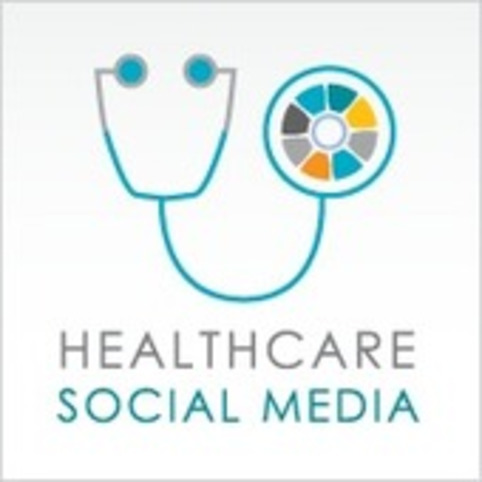

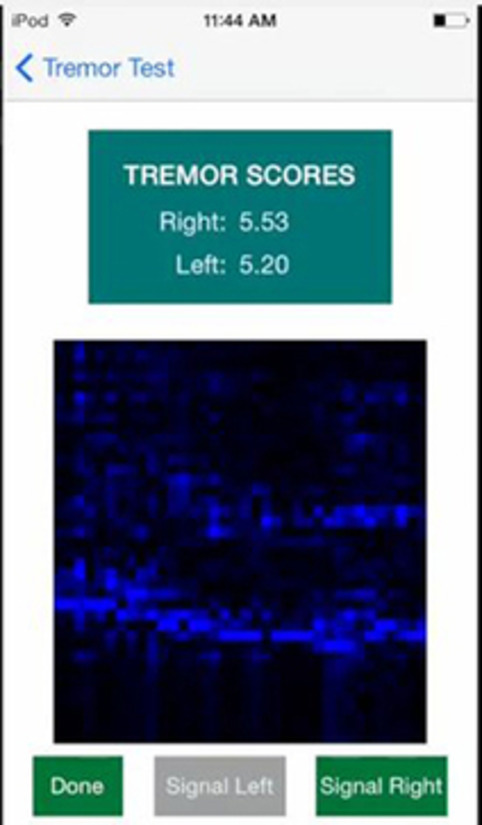
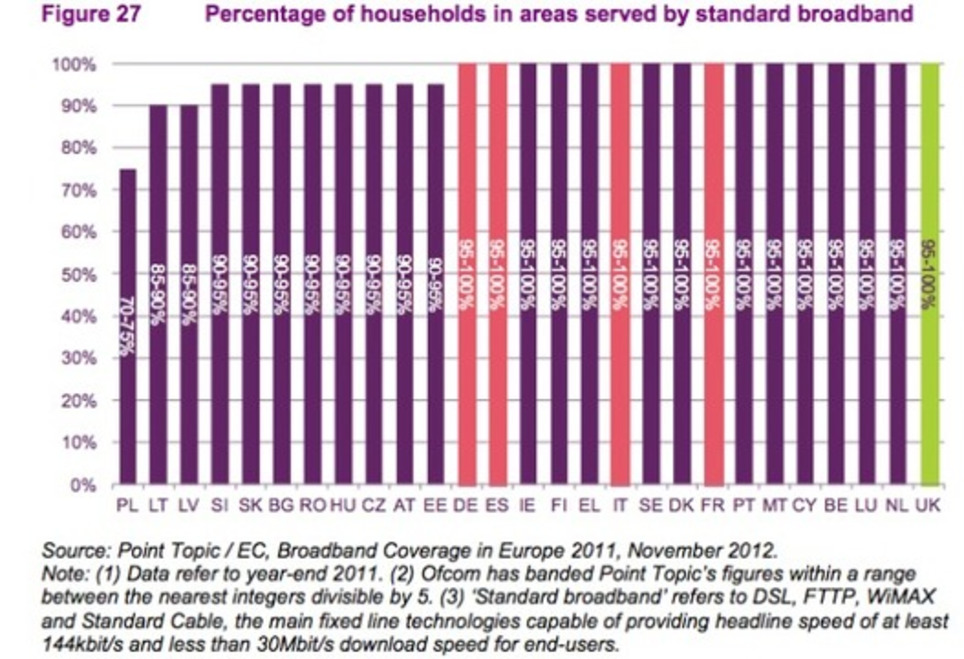
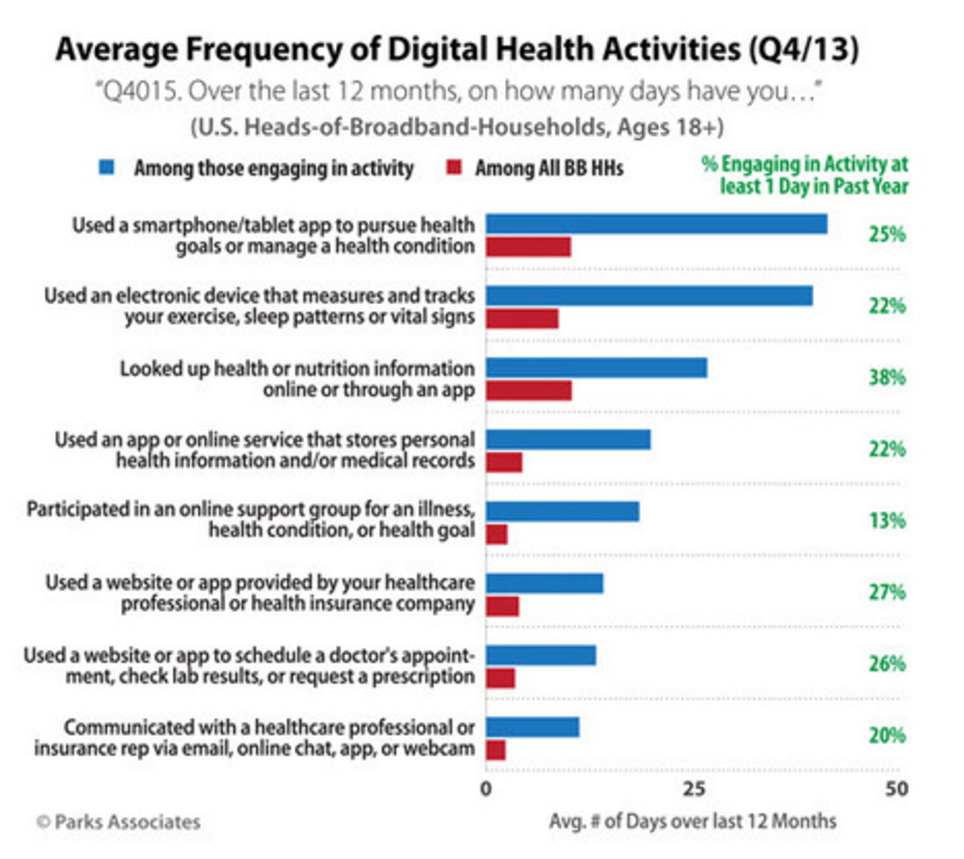
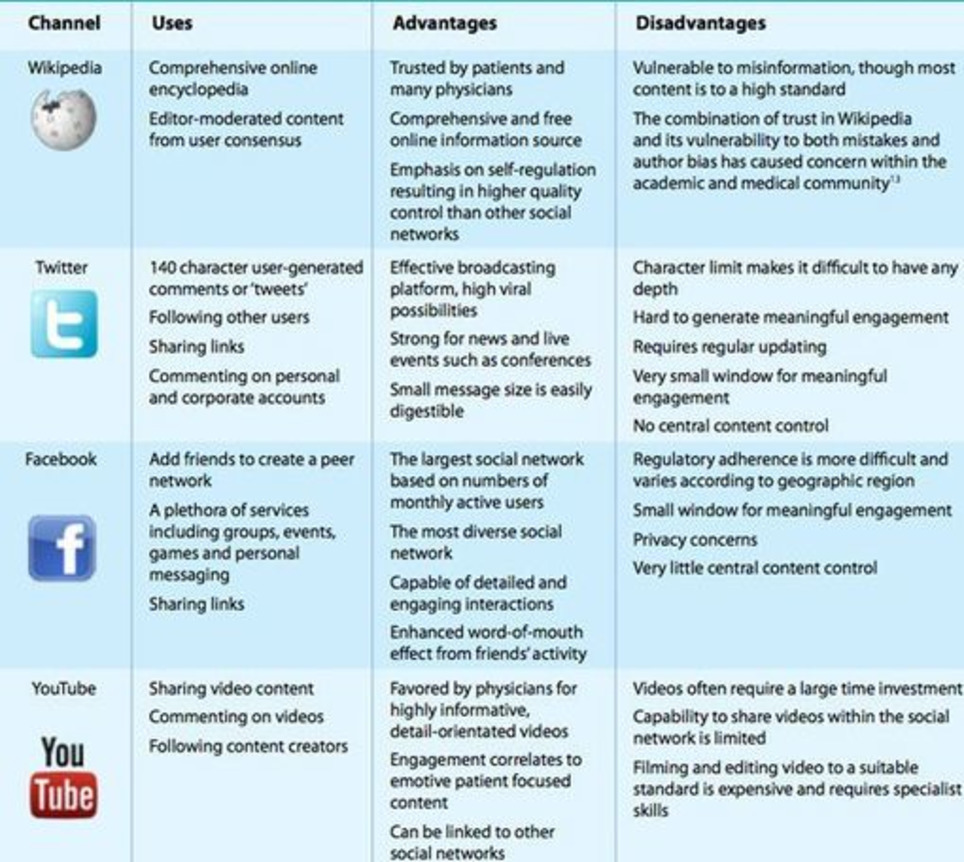

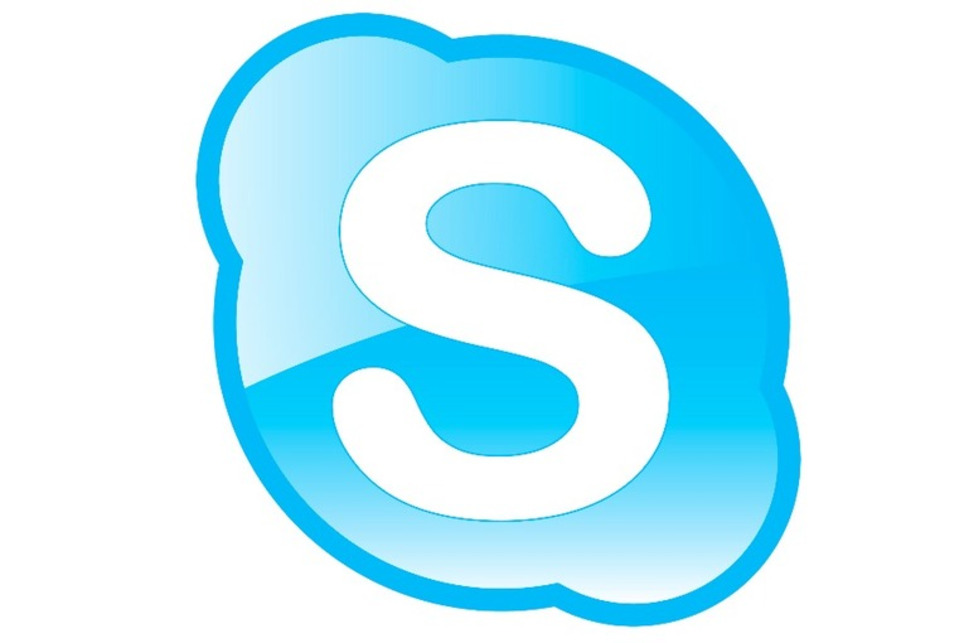

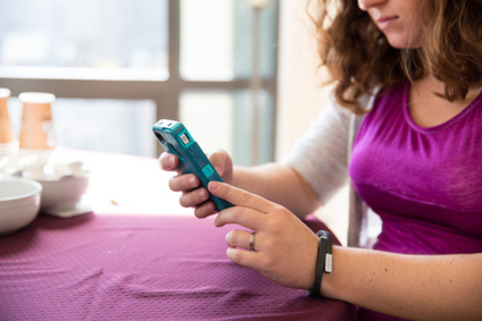

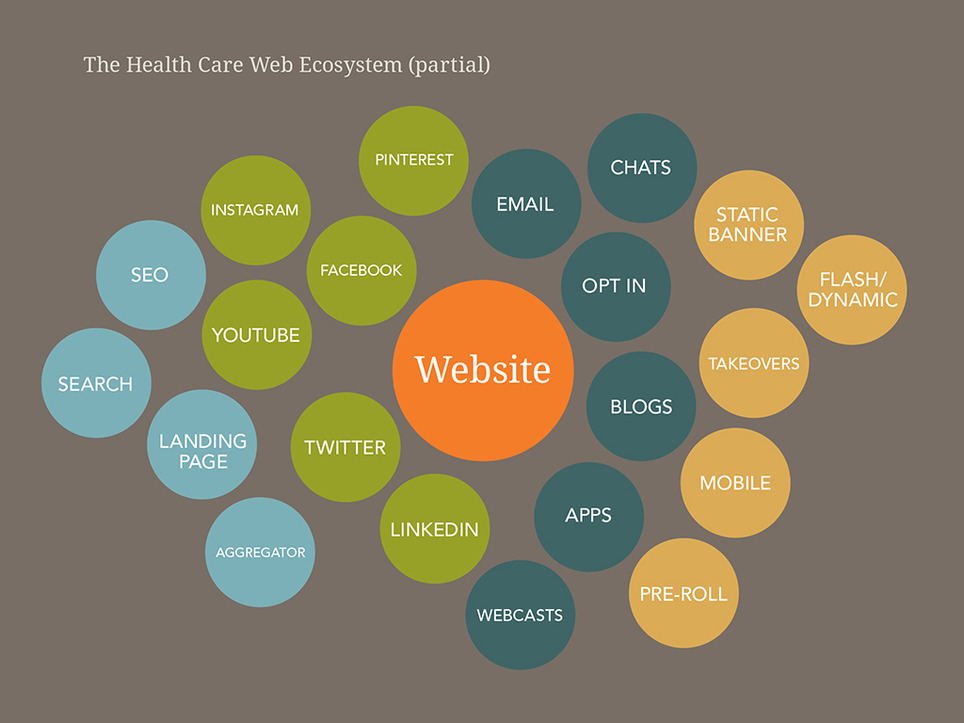
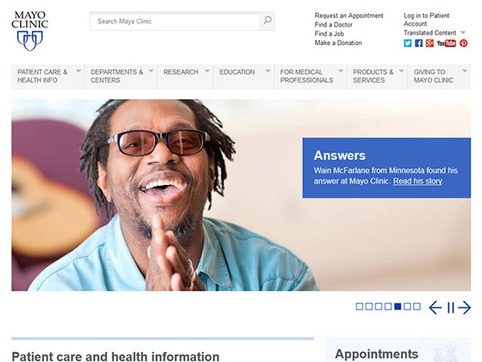
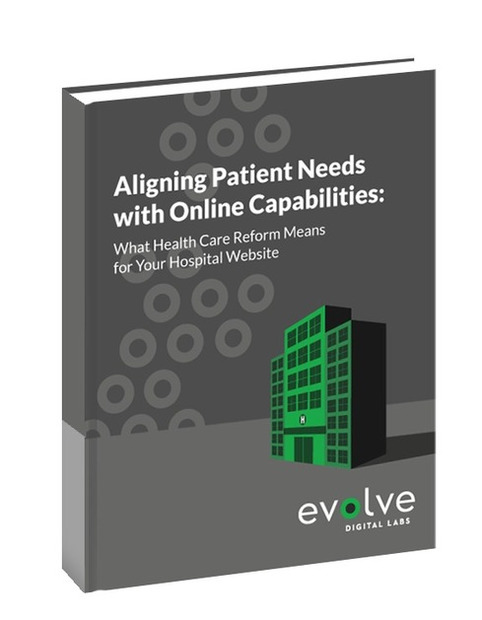

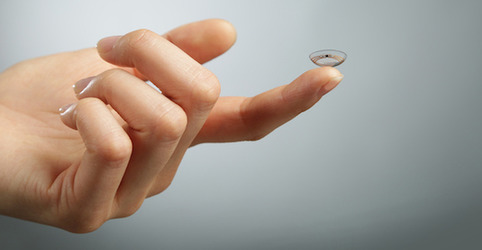
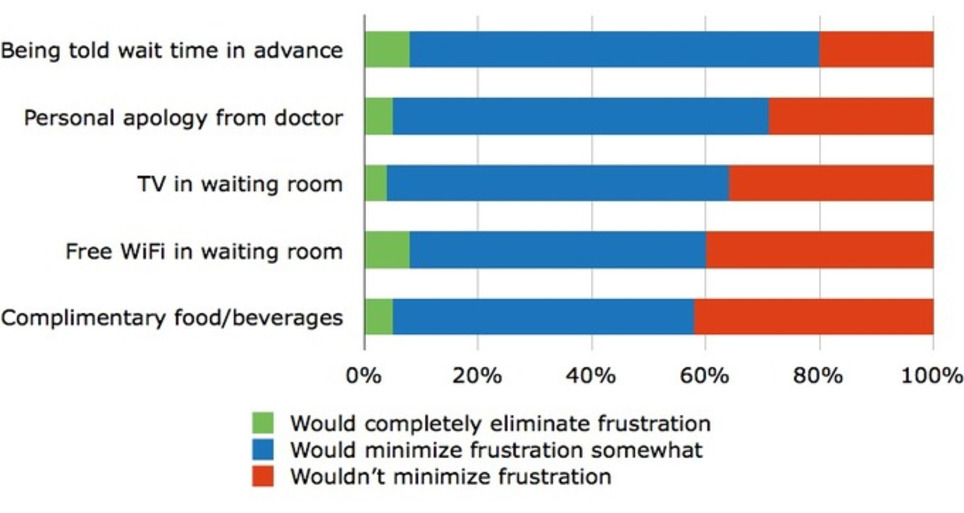

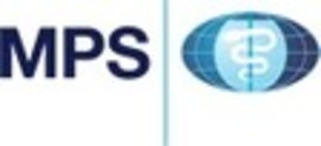


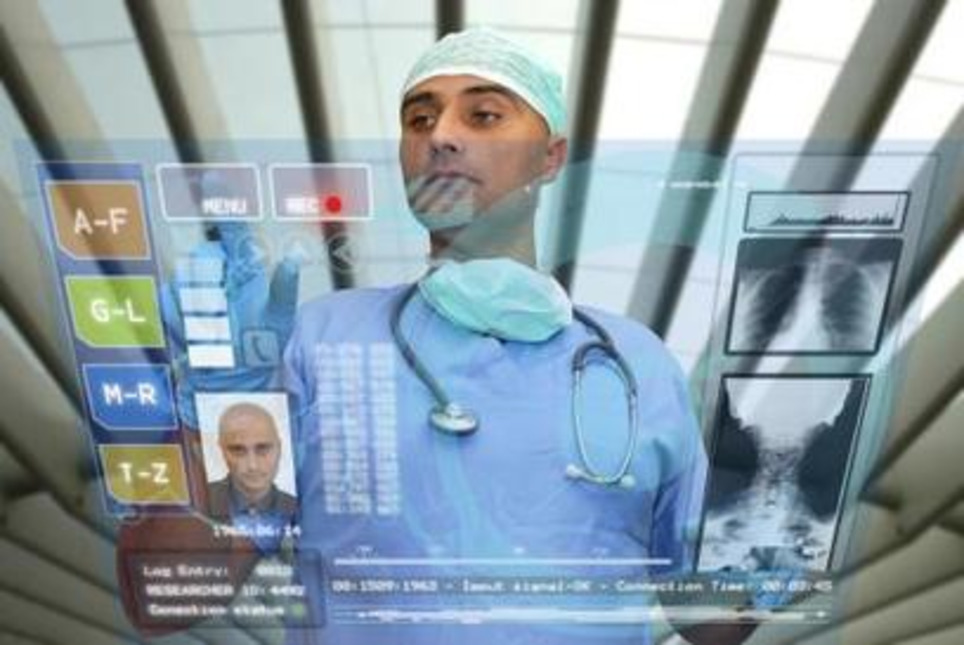












Great guidelines for tweeting in health care!